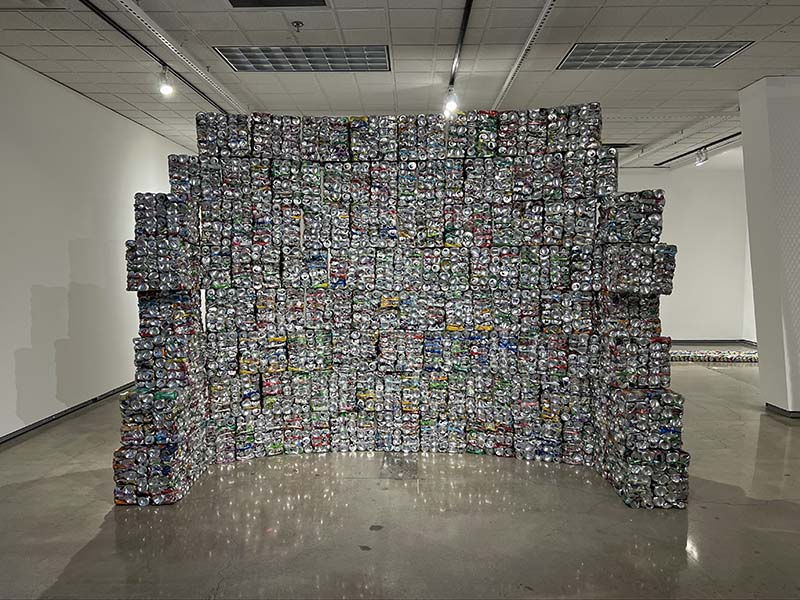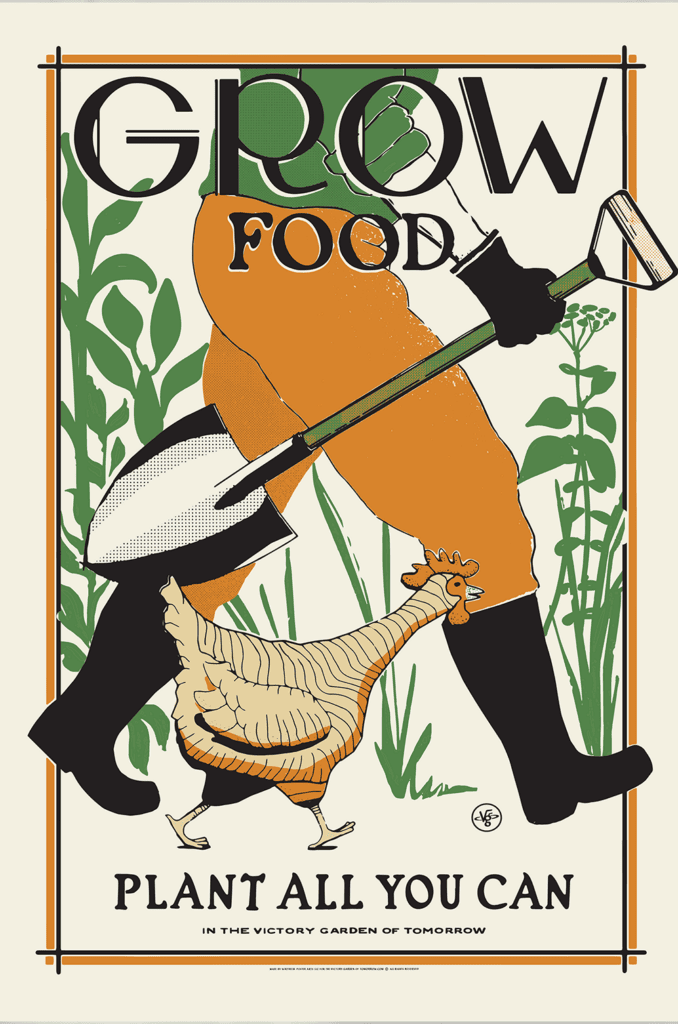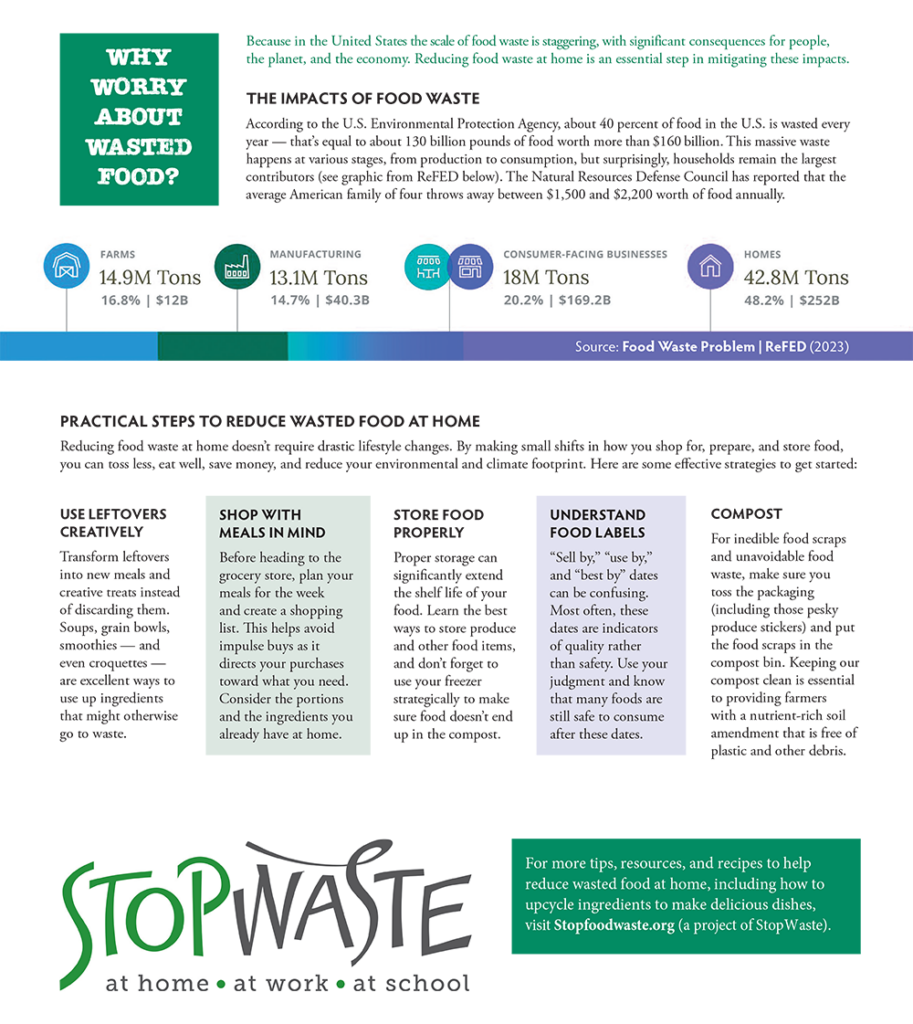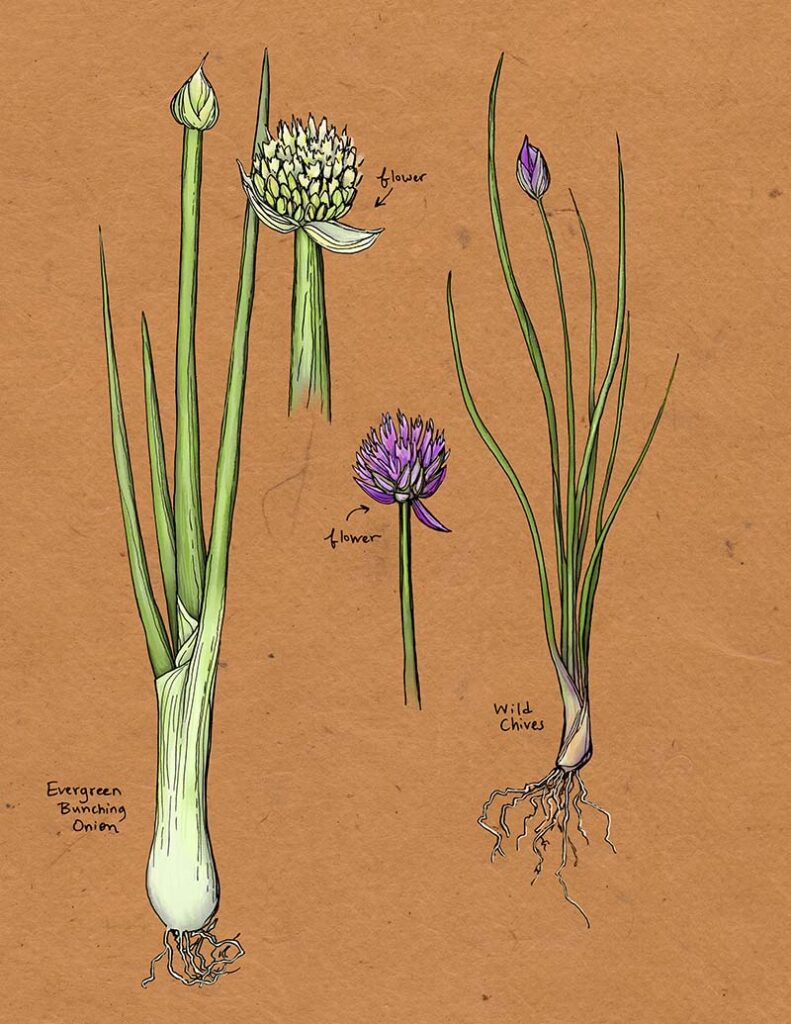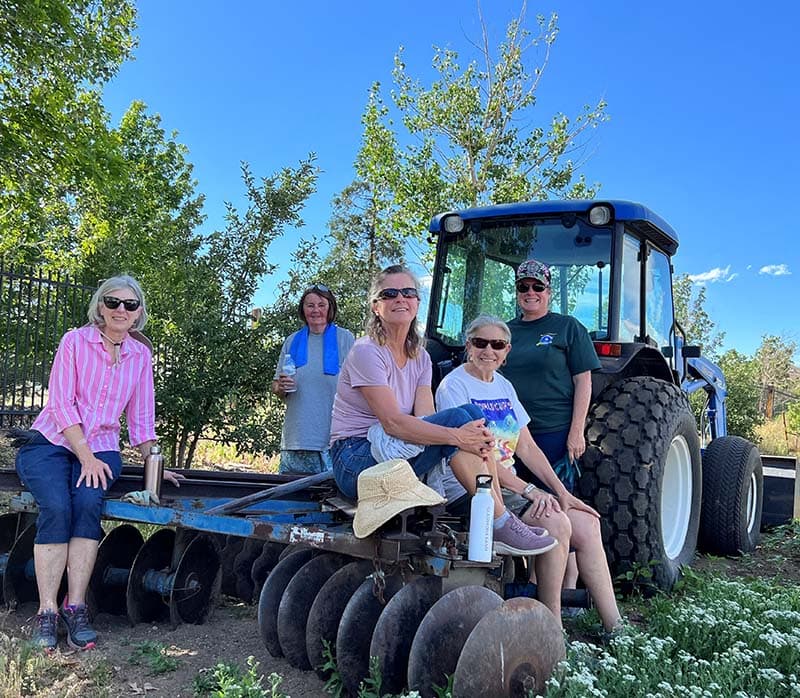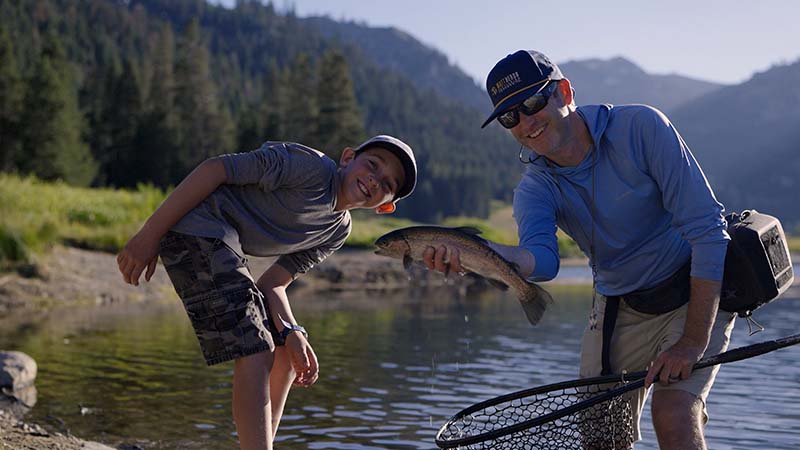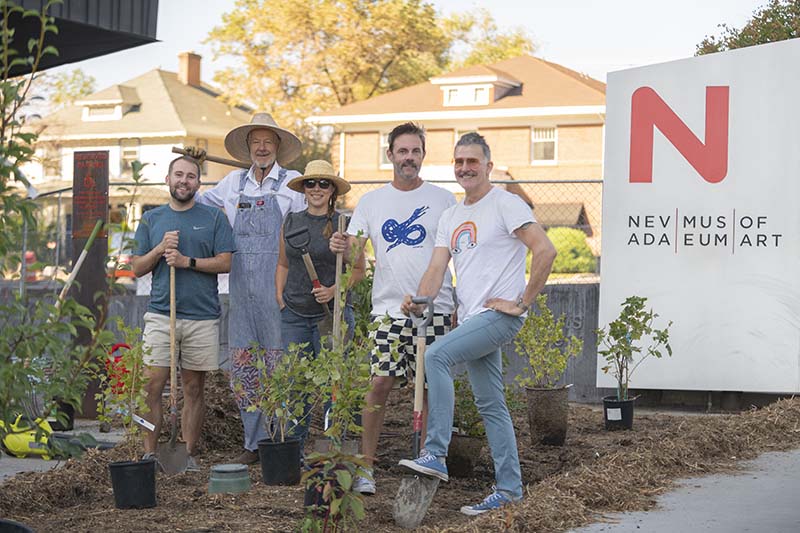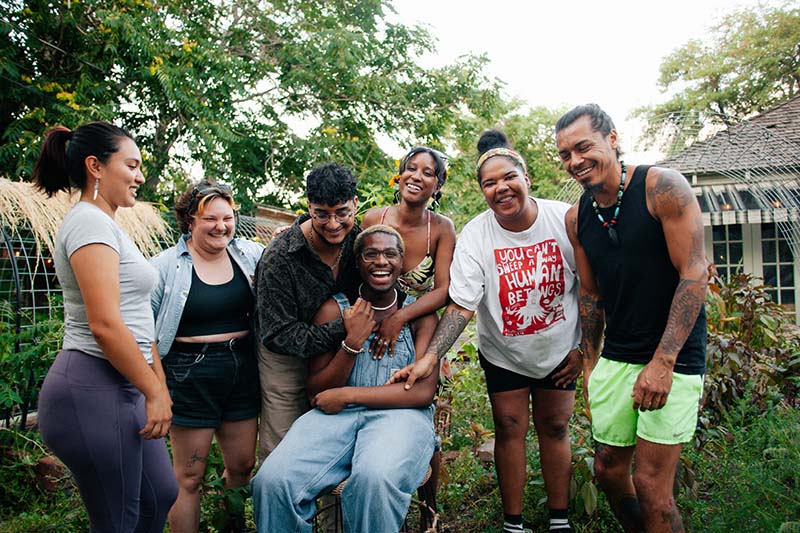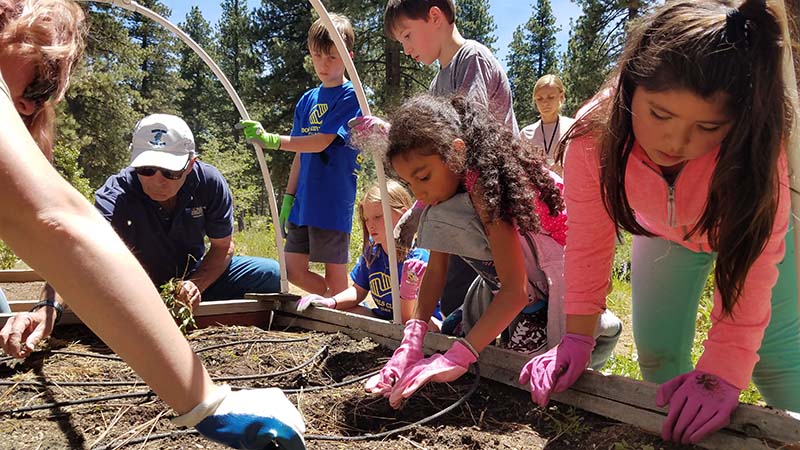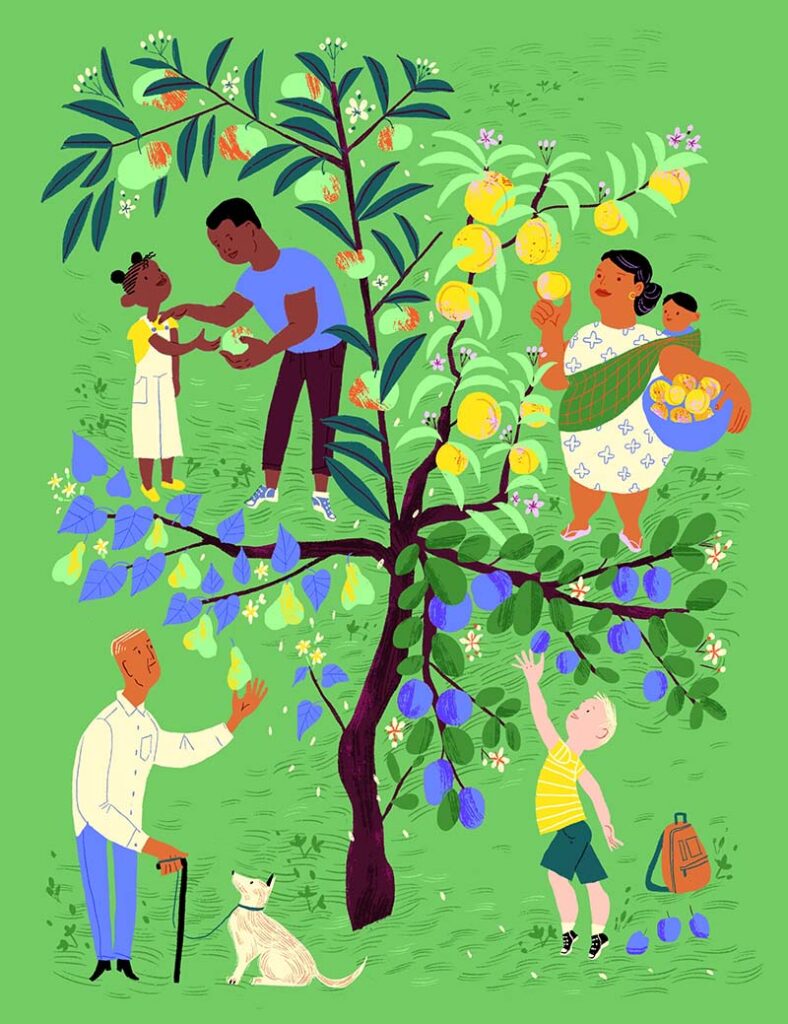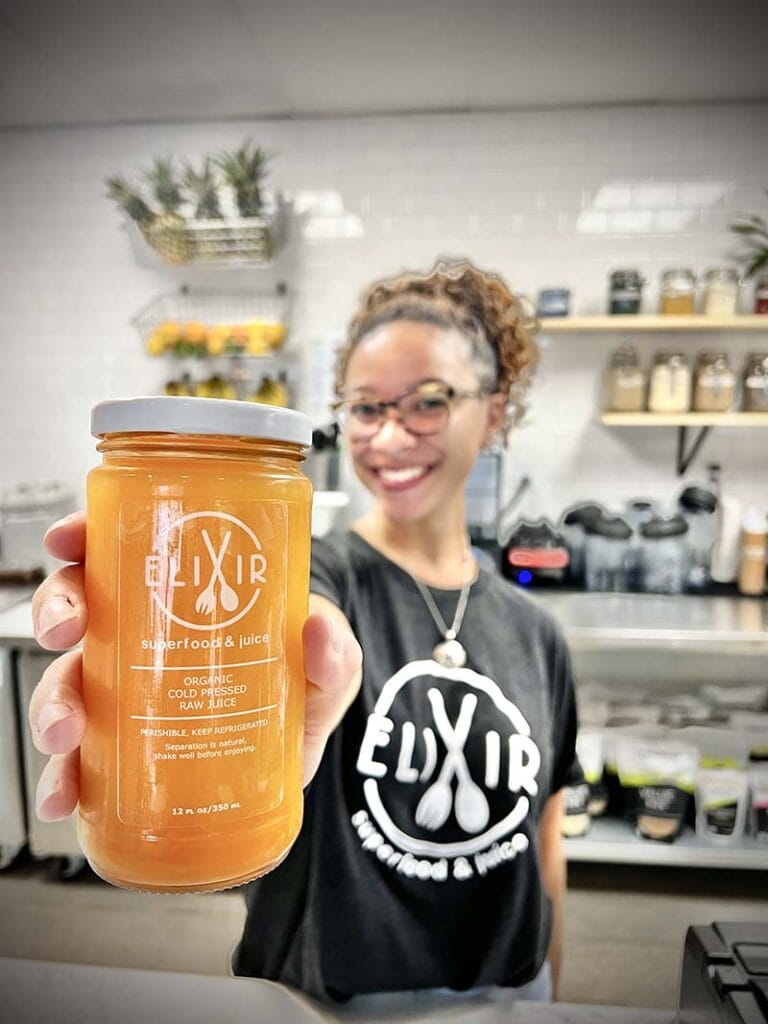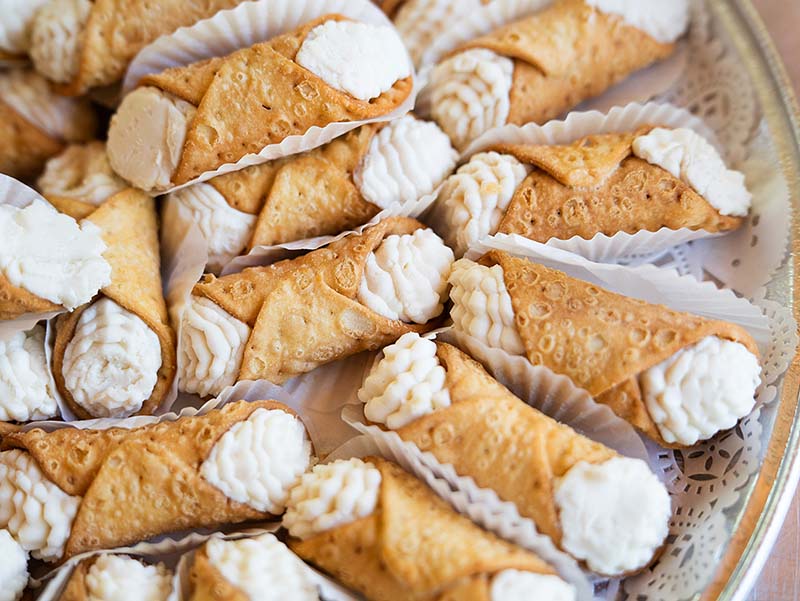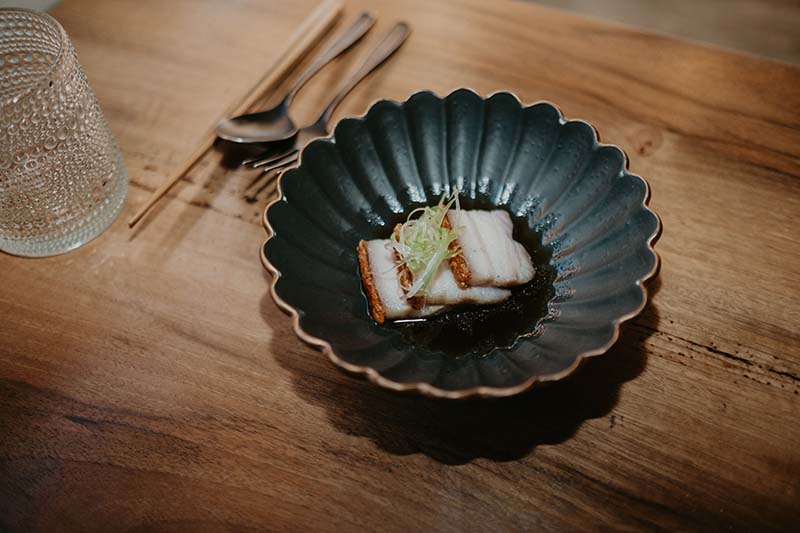From Refuse to Muse
Kyle Karrasch’s art opens eyes to environmental issues.
For native Nevadan and artist Kyle Karrasch, creative inspiration emerged from his Boy Scouts background and living the organization’s ethos of “leave no trace.” Everywhere he went in his youth, no matter how remote, he saw evidence of human activity in the form of garbage.
When he began looking into waste data in Nevada, the numbers traumatized him. According to statistics published by the Nevada Division of Environmental Protection in 2022, the most recent available, Nevada residents then produced almost double the national average of municipal solid waste: 7.98 versus 4.9 pounds per person, per day, respectively.
A realization set in for this University of Nevada, Reno Master of Fine Arts graduate. The waste people create can at least be used as an artistic medium. Thus, people’s refuse became his muse.
For his MFA thesis project, Karrasch created an in-your-face exhibition called Waste Aeon, which visually demonstrated the staggering amount of waste humans create daily.
Ascent — a large-scale, cascading arc sculpted from cardboard that appears translucent from certain angles — brings awareness to the 700 pounds of paper the Environmental Protection Agency states the average American uses annually, as well as the belief that most waste is out of sight and out of mind for many people.

Karrash crafted Fractionary Mass out of 12,000 crushed aluminum cans, which he condensed into 12-inch-by-12-inch cubes. The entire piece, his largest, represents only 3.4 seconds of U.S. consumption of aluminum by way of cans alone.
“Waste Aeon was a show about looking at data visualization in the form of waste and adding in the numbers to really hit home what these really large-scale installation pieces are talking about,” Karrasch says of his thesis project-cum-commissioned exhibition at Western Nevada Community College’s Bristlecone Gallery. “Out of that show, scale, I knew, was going to be super important because it had to be bigger than an individual human to really bring home the gravity of the situation.
“[E]very three seconds, the cube wall is doubling, then in six seconds it’s doubling again, and again; that’s what I really hoped would push through the notion of mass waste,” he adds.
Planned obsolescence was a primary inspiration for Waste Aeon, which took a year and a half to complete as the artist worked on each piece incrementally. He amassed materials such as cardboard and aluminum cans with the help of the community, family, and friends, then deconstructed them so they were not quite recognizable. He speaks of there being a line in eco-art “between heavy-handedness and ambiguity to make it more of a subjective experience for your viewer.”

Karrasch says the leading intent of his work is to get people to think about where any object goes after it is used. As soon as a can is in the trash, people generally don’t think of it again, and it will likely end up in a landfill because, currently, he says, little infrastructure exists to recycle in Nevada.
The disparity between what we use and what gets recycled is enormous, and the numbers prove this. Nevada’s recycling rate was just 24 percent in 2021, according to Nevada Division of Environmental Protection.
What does Karrasch suggest people do to reduce their waste?
Reduce and reuse, and, of course, recycle when you can, but also be aware of what is recyclable. For example, familiarize yourself with the seven categories of plastic recycle codes, and understand that the higher the number, the more difficult it is to recycle.
“If we actually put money into recycling infrastructure, we could make a ton of money as a state, but for some reason we just refuse to,” Karrasch says.
It’s powerful wisdom from this sculptor of waste who already has an abundance of free materials at his disposal.
For details about Karrasch’s work, visit Klkarrasch.art.

